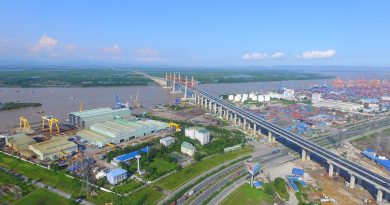3 Steps for Construction Companies to Manage Tech Disruption
The construction industry is at the start of a disruptive but exciting technological revolution, from using building information modeling software to create projects digitally before the first brick is laid, to using drones to survey jobsites. However, as the use of digital advances for everything from bidding for contracts to 3-D printing proliferates, smart firms are learning that they will maximize value from technology investments that are strategically aligned with their key business goals.
The change occurring in construction is so big that consulting firm McKinsey calls it, “The next great tech transformation.” However, consultancy JBKnowledge Inc. says most firms still don’t spend enough on technology, with about two thirds of firms spending 1 percent or less of annual revenues on information technology.
Nevertheless, before increasing spending on disruptive technology, many construction executives feel overwhelmed by the cost and underwhelmed by the effectiveness of their existing spaghetti bowl of disparate digital assets. Itis not uncommon at construction firms for each department head to be buying and deploying software without consulting other parts of the business, including the IT department. The end result is chaos and frustration with many executives feeling unable to deliver upon the promises of technology to make jobs easier for their employees and to reduce the cost and improve the experience for the customer.
Now, before investing in new technology, they want a better understanding of why previous projects have failed and what they can do to better harness digital assets effectively to move the business forward while keeping up with the competition. The answer is change the role of IT in the business and the interactions and relationship between IT and the departments it serves.
While that may sound daunting, the payoff will be huge. Engineering and construction firms globally can leverage technology to save almost 20 percent of a project’s life-cycle costs and significantly improve completion time, quality and safety, according to Boston Consulting Group. And, when an industry is relatively late to being disrupted by technology, executives can learn from the experience of other industries that went before. Companies can get the most from disruptive technology by following three steps, listed below.
- Strategy—IT strategy must support the firm’s overall business strategy, setting goals for up to 3 years. At many construction firms, IT occupies an extreme position, either enabling or constraining business growth, yet it goes on largely ignored as a critical “business objective,” but rather an overhead cost that is owned by the IT department. Any effective strategy must be owned by the firm’s chief executive, with key business unit leaders as well as members of the IT team helping determine and deliver on that strategy. It will never be effective to expect technology to create competitive advantages, such as improving sales results, reducing job costs, increasing operational efficiencies and improving customer satisfaction while continuing to approach the IT budget and resource plan as a cost-center that drains resources. A steering committee should stay abreast of broad industry and competitor trends and report back regularly to senior management to inform their planning and decisions. The goal is to align resources and money with the level of innovation expected. Strategy should set specific parameters for the use of technology, for example – will and when will the firm utilize a standardized software stack and under what conditions would the firm consider deviations from that model in order to bid on a specific contract. An enterprise-wide IT strategy empowers construction firms to ensure that their IT investments are not being overly influenced by any particular client, department or influencer at the expense of the greater health and goals of the entire business.
- Partnership—A series of small measures can help make business operations and IT teams work as partners. Operations managers should view technology as an investment, while IT executives must understand how technology can alleviate business pain points and boost the bottom line. That starts with spending time together. Firms should identify key projects, identify what business goal they align with and name an operations and IT executive as joint owners of each key project. Operations executives could be reassigned to work as part of the IT team and vice versa. Firms should also adopt the formal process of setting up written project charters that set out the scope, measureable objectives and key participants in important projects. Those participants should include operations and IT team members, and a technology leader or consultant who can enable them to work closely together.
- Spending—Having the right IT team does not automatically mean hiring a high-priced Chief Information Officer (CIO). Instead, companies should start by evaluating existing talent to ensure the right people are in the right roles. Then, the business customers of IT should be surveyed to measure satisfaction with technology services that matter most to the business. When high priority needs are not being met, the company should reallocate IT resources or reprioritize efforts accordingly. Before spending on new or additional IT staff, companies should increase the effectiveness of the staff they may already have by investing in coaching, development and mentoring programs. Additionally, all IT spending and investing should be in line with the IT strategy outlined above in step No. 1.
by Shane Brown & Sean McBride







